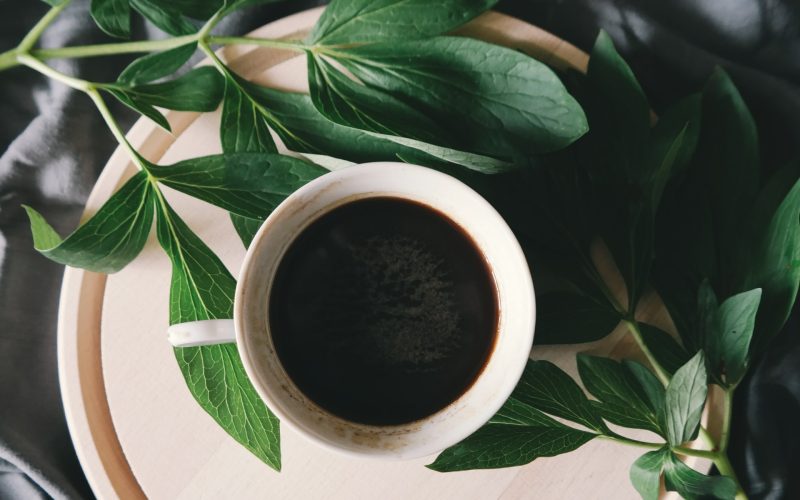BPA, or bisphenol A, is a chemical found in many plastics and resins. It can be harmful to your health, which is why it’s important to reduce your exposure to it.
BPA has been linked to cancer, reproductive problems, and heart disease.
But there is one place you might be surprised to find it: coffee.
In this post, we’ll show you how to reduce your exposure to BPA when drinking coffee. (Spoiler alert: It’s easier than you think!)
We’ll talk about the best ways to store your coffee beans and brewed coffee, as well as how to choose BPA-free coffee products.
Let’s get into it.
2. How is BPA found in coffee and what are the risks associated with it?
BPA is found in coffee in two ways: through contact with BPA-containing materials, like certain types of plastic or metal canisters, or by leaching from those materials into the coffee itself.
The risks associated with exposure to BPA are numerous and well-documented. In addition to cancer, BPA has been linked to reproductive problems, heart disease, and diabetes.
So it’s important to take steps to reduce your exposure to this chemical.
Fortunately, there are a few simple things you can do to limit your exposure to BPA when drinking coffee.
12 Ways to Reduce BPA in Coffee
Here are ten tips to help you reduce your exposure to BPA when drinking coffee:
- Store coffee beans in a glass or ceramic container instead of plastic.
- Choose coffee products that are labeled “BPA-free,” including BPA-free coffee makers if possible.
- Brew coffee using a French press or stovetop espresso maker instead of an electric coffee maker.
- Avoid using reusable coffee mugs made of plastic.
- Use whole beans instead of pre-ground coffee to limit your exposure to BPA.
- Store brewed coffee in a glass or stainless steel container instead of plastic.
- Do not heat up coffee in the microwave using a plastic mug.
- If you must use a reusable coffee cup, make sure it’s made of stainless steel, glass, or another BPA-free material.
- If you use a Keurig or other type of single-serve coffee maker, don’t use the disposable plastic cups. Instead, invest in a reusable K-cup or another type of reusable coffee filter.
- Use a paper coffee filter instead of a plastic one.
- Avoid using plastic stirrers, straws, and lids.
- If you must use disposable coffee cups, make sure they’re made of paper, not plastic.
How to Choose BPA-Free Coffee Products
Now that we’ve gone over some tips for reducing BPA in coffee, let’s talk about how to choose BPA-free coffee products.
When shopping for coffee, look for products that are labeled “BPA-free.”
You can also check the product’s packaging for a recycle symbol with the number “seven” inside of it. This indicates that the product contains BPA.
If you’re unsure whether a coffee product is BPA-free, contact the manufacturer to ask.
When in doubt, choose whole bean coffee over pre-ground coffee, as pre-ground coffee is more likely to come into contact with BPA during packaging and storage.
You should also avoid using reusable plastic coffee pods, as they may contain BPA. Instead, opt for single-use paper filters or metal reusable filters.
When choosing coffee products, look for those that are certified organic.
Organic coffee is grown without the use of synthetic pesticides and fertilizers, which can contain BPA.
It’s also important to choose fair trade coffee, as this ensures that farmers are paid fairly for their coffee beans.
The Best Ways to store coffee beans and brewed coffee
When it comes to storing your coffee beans or brewed coffee, the best way to limit your exposure to BPA is to use glass.
This includes both storing your beans in a glass container and brewing your coffee in a glass carafe.
If you must use a plastic container, make sure it’s labeled “BPA-free.”
You should also avoid storing brewed coffee in the fridge, as this can cause the coffee to pick up odors from other foods.
Brewed coffee is best stored in an airtight container at room temperature.
When it comes to freezing coffee, you can do so safely by transferring it to a BPA-free freezer bag or container.
Just be sure to thaw and brew your frozen coffee within three months for the best flavor.
The Bottom Line
We hope this post has given you some helpful tips for reducing your exposure to BPA when drinking coffee. By following these tips, you can enjoy your cup of joe without worrying about the harmful effects of this chemical.

